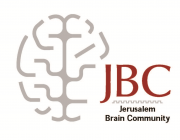
Adi Mizrahi
Population Dynamics in the Mouse Primary Auditory Cortex
Sensory processing in the mammalian brain is carried out by large populations of neurons. We use both single cell electrophysiology and in vivo two-photon calcium imaging in mice to study the functional organization, dynamical principles, and functional plasticity of neural population in the primary auditory cortex.
In particular we are interested in understanding how sensory coding changes following learning and following natural experiences that are behaviorally relevant. We have several projects that aim to target and manipulate neuronal subpopulations in the cortex. In particular we combine molecular methods (like viruses and transgenic mice) with electrophysiology and optical physiology.
Newborn Neurons in the Olfactory Bulb
While in most parts of the brain new neurons are not generated, few neurogenic niches are maintained also in the adult. One of these regions is the olfactory bulb (OB). Little is known about the functional role of this unique form of network plasticity. We use various genetic tools in combination with in-vivo imaging to study how these neurons develop and maintain, in vivo. Specifically, we use two-photon time lapse imaging and to study periglomerular neurons under various experimental conditions.

